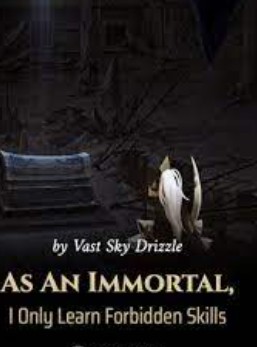Chapter 590 Trouble
Shulka divided the plan into two steps.
Major Akimovich was responsible for the suppression of German radar.
Major Akimovich was responsible for intelligence collection when he was the staff officer of the group army, and it can be said that it was just right to perform this task.
The reason is that collecting intelligence originally required placing eyeliners, spies, and even organizing guerrillas behind enemy lines.
Suppressing the German radar obviously cannot be achieved through regular combat... If the Soviet regular army can penetrate the German defense line and accurately attack its interior, it means that the Soviet army can defeat the German army at any time, which is obviously impossible.
On the other hand, as Akimovich said, the German army is likely to use vehicle-mounted radars that can be transferred at any time, so it is impossible and unrealistic to use regular troops to break through the German defense line and raid.
In this regard, Shulka let Major Akimovich do it, because he has no resources, and more importantly, Shulka has a dispensable attitude towards suppressing the German radar...can destroy the German ground radar Best of all, it's okay if it can't be destroyed, and Shulka doesn't hold out much hope for that.
Shuerka mainly focused on building the pontoon bridge.
It is not difficult to build a pontoon bridge. The first thing is to seal the oil drums in large quantities.
This work is simple and easy, because the oil drum itself has a sealing cover, and it only needs to fix the sealing cover on the fuel tank.
The difficulty lies in that it cannot be welded with electric welding... It is easy to cause problems with electric welding of oil barrels, because there is often a small amount of gasoline left in the oil barrel, and these gasoline volatilizes gaseous gasoline and mixes with air. As long as there is a little spark, it may be ignited and destroyed. explosion occurs.
The solution is to use glue to stick the oil drum cover instead of electric welding.
Then tie the board to the fuel tank, and it's done.
In fact, this work was done by the river, because the fuel tanks tied with wooden boards were not convenient for transportation.
So, a truckload of fuel tanks, glue, planks, wire, ropes and other tools were transported to the Volga River.
The people of Stalingrad were also organized... Most of them were workers who hadn't had time to evacuate, and of course there were also temporarily transferred soldiers.
Then throw it directly into the water after making it on site.
Wooden boards and iron buckets are inconvenient to carry on the shore. Throwing them into the water becomes a small raft floating on the water. It can be easily dragged to the destination with a rope, and there are even many people on the shore. Connect several of these small rafts, and then a few people jump on it, and take the oars like rowing it to the end of the wooden bridge to join.
One of the reasons why this can be done is that the Volga River flows smoothly...it has a total length of 3692 kilometers, but the drop is only 190 meters.
Because of the gentle water flow, so many and such long sandbars are formed in the middle of the river. Of course, this also brings convenience to the construction of floating bridges.
Another reason for the fast construction is that there is a sandbar in the center.
This was originally a shortcoming for the transportation of Stalingrad. Because of these sandbars, the transport ships on the east bank can only go to the west bank through a narrow river, and it is precisely because of these sandbars that the fake amphibious landing ships cannot cross over, causing problems.
but…
For the "Floating Bridge Project", these sandbars are definitely an advantage.
Because it enables the pontoon bridge to be erected simultaneously from four base points: one on the east and west banks, and two on the sandbar.
In other words, its construction speed is at least twice as fast.
So, in just two hours, five pontoon bridges were built on the Volga River... Building a pontoon bridge is somewhat similar to digging a tunnel. Concentrating all the hands in one place and building a pontoon bridge at the same time often does not speed up much. By doing this, as many pontoon bridges as possible can be built in the shortest possible time.
When the first pontoon bridge was joined, the good news immediately reached the 82nd Infantry Regiment Headquarters, which was commanding and coordinating the distribution on the shore.
"The third bridge is closed!" Andrianka, who was guarding the phone, reported to Major Mikhailvich excitedly.
"Great!" Major Mikhailvich ordered: "Start transporting immediately!"
At this time, the German army adopted a "surprise attack" strategy in order to save ammunition, so they knew nothing about the Soviet army's plan to build a pontoon bridge in the dark.
It wasn't until an hour later that Fred discovered the problem when he commanded a large group of fighter planes to carry out a surprise attack with the cooperation of the reconnaissance plane.
"Colonel!" The pilot reported to Colonel Fred in surprise: "They built several pontoon bridges on the river!"
"How many? How could there be several?" Colonel Fred asked back: "It's only three hours before dark!"
Colonel Fred meant that the enemy had only been out of sight of the German army for a few hours, and how many pontoon bridges could be built within these few hours... This speed is like dragging the built pontoon bridges directly onto the Volga River.
"I'm sure I'm not mistaken, Colonel!" The pilot insisted: "There are indeed several pontoon bridges, and they have even used these pontoon bridges for transportation. I saw that there seemed to be someone on it..."
The reason for using "seems" is because it is difficult to see clearly when looking down from the plane and with the light of the flares.
"You ask what to do?" Fred replied a little angrily: "Do you have any other options besides destroying them?!"
"Yes, Colonel!"
So, the flares lit up over the pontoon bridge one by one, like fireworks blooming in a festival.
In addition to providing sight for fighter jets to dive, these flares also indicate the orientation of targets for other fighter jets.
As a result, fighter planes quickly came from all directions, and then swooped down amidst bursts of ear-piercing screams.
This time, the pilots realized that they had brought the wrong ammunition.
When dealing with amphibious landing ships before, machine guns and machine guns are obviously more useful, because a shuttle bullet can easily penetrate the hull and damage the engine or something else to cause it to malfunction.
But now, a shuttle of bullets hit the pontoon bridge like a stone bull entering the sea, and there was no movement at all.
If anything, the soldiers lining up on the pontoon bridge to transport supplies were hit by a barrage of bullets and fell into the river.
However, this is obviously not what the German pilots want.
At the same time, the Soviet army didn't care about these casualties, especially since most of these personnel came from the east bank.
The bomber dived down to the pontoon bridge to drop bombs, but because the pontoon bridge is not big, it is very difficult to hit the target.
What's even more amazing is that even if it was blown into several pieces by bombers, the sections of rafts that had been prepared on the river will soon flow down the river to fill up the gaps, just like a long snake that can heal itself Shipping resumed shortly thereafter.
When the pilot reported all this to Fred, Fred immediately reported to Paulus: "We are in trouble, General!"
(end of this chapter)
RECENTLY UPDATES
3.45







